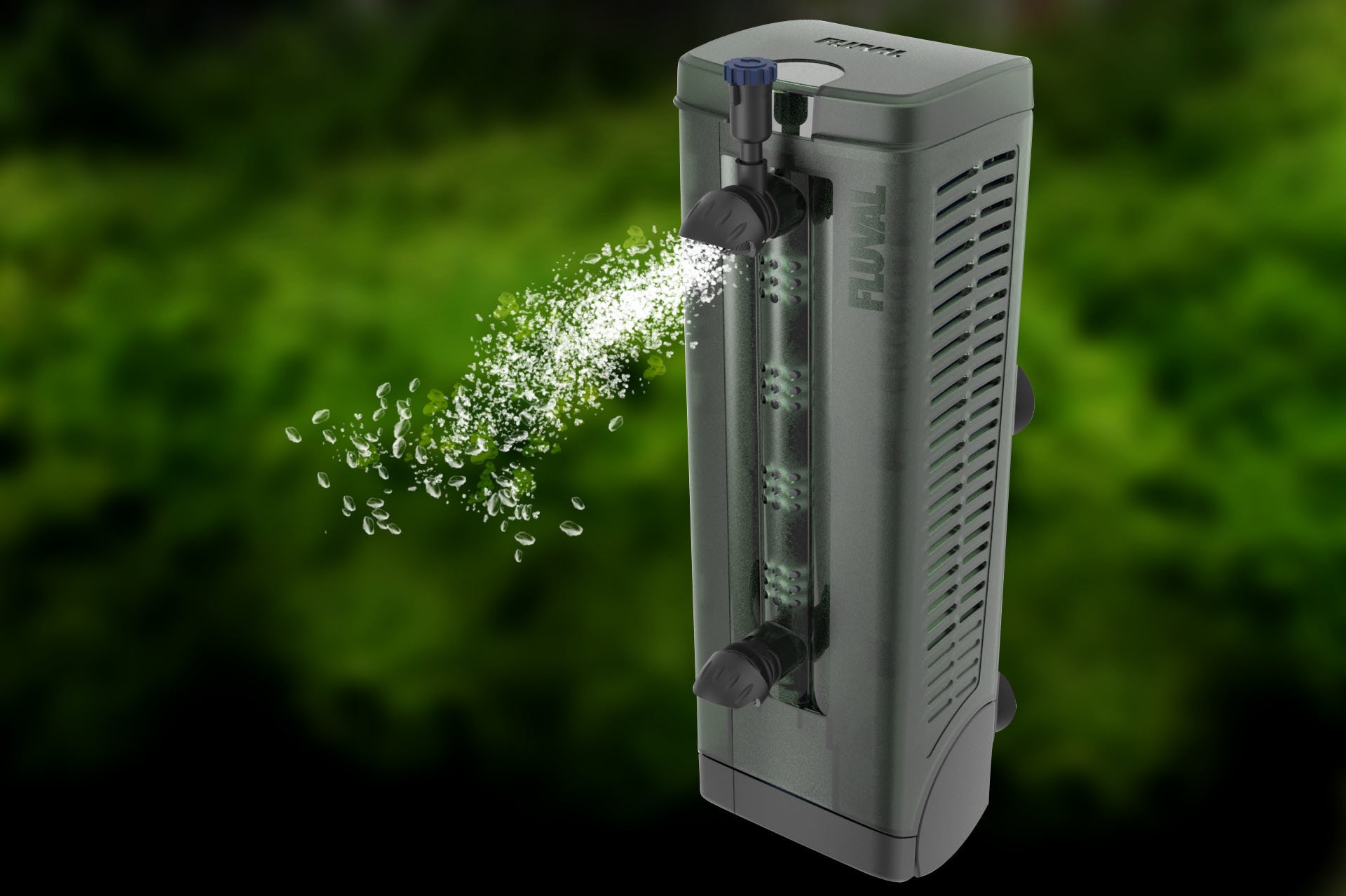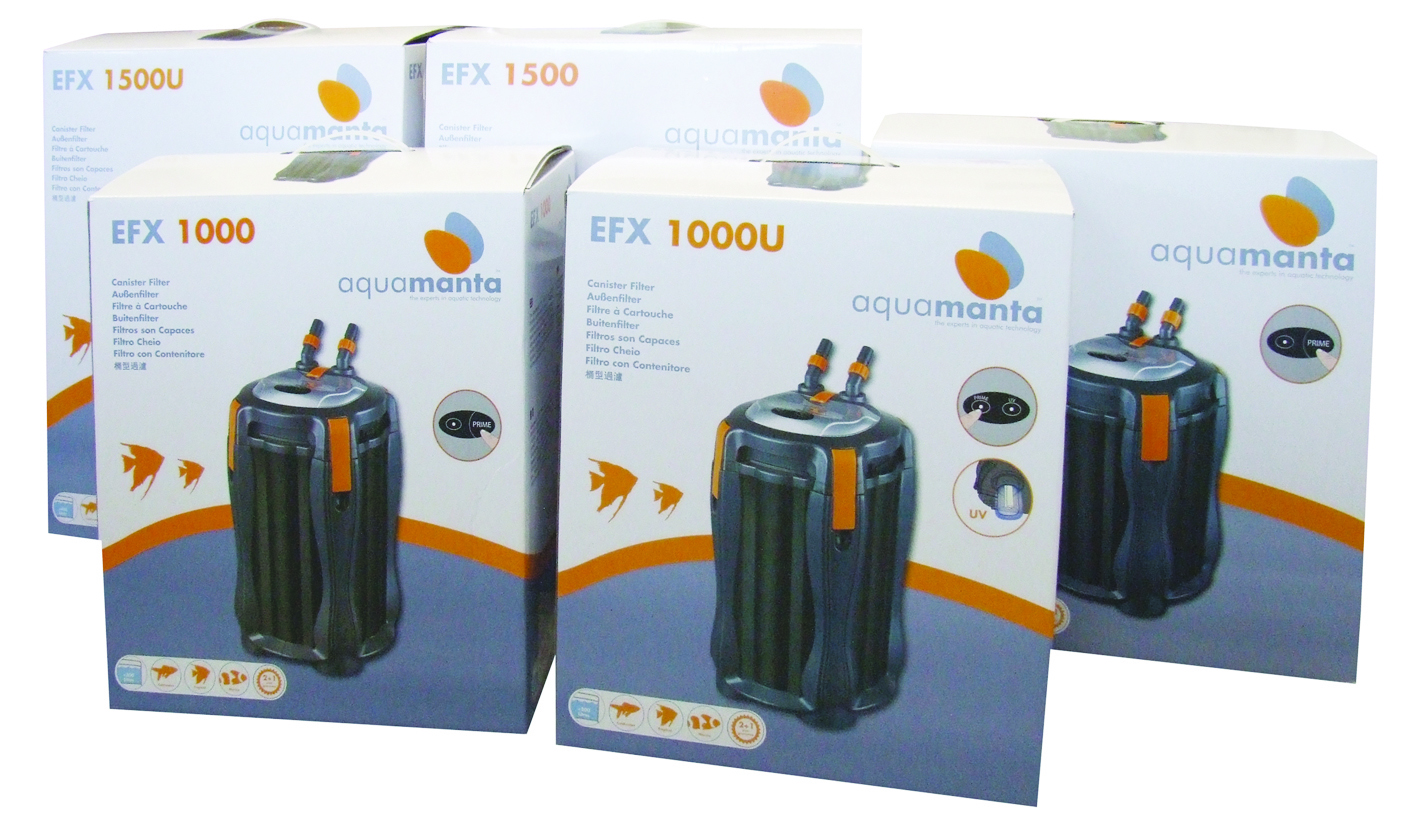Choosing a filter is just as important as choosing the type of tank and fish that you want. The filter is the life support system for any aquarium so it should be reliable and easy to use and maintain. Don’t skimp on this essential piece of equipment, as getting it wrong may mean the death of your fish. Filter types can be broken down into internal and external, and air powered or power filters.
Internal filters:
Internal filters can be air powered or power filters, and popular types include air powered sponge filters, undergravel filters and canister filters. Canister filters are by far the most popular method of filtering any aquarium these days as they are cheap, quiet and powerful. An example of an internal canister filter is the Hagen Fluval plus internal power filter. Internal canister filters typically contain a sponge for both mechanical and biological filtration, but good models may have two sponges for alternate cleaning, keeping bacteria levels high, meaning easy replacement of one without losing your main biological filter.Other features may include adjustable nozzle direction, adjustable flow and other media like carbon filtration or a disposable polyester pad for extra mechanical filtration.Internal canister filters are good for filtering tropical and coldwater aquariums up to 120cm long and 200 litres in capacity, but may struggle in aquaria over those sizes or with large, messy fish like cichlids.

Air powered internal filters:
These have been around for a long time and are now overshadowed by the internal power filter. The air powered sponge filter does still have its place however, as it has a finer filter foam than power filters and a more gentle flow. This lends itself to tanks containing very small fish and fry. Siamese fighting fish, preferring to live alone in still water, will also benefit from this form of filtration. Interpet produce such a filter. Undergravel filters used to be the mainstay of the UK hobby, decades ago but they can be problematic if not maintained properly. All the waste in the aquarium is drawn into the gravel covering the perforated filter plate, and must be removed by you regularly so that it does not block and deprive bacteria on the gravel from getting vital oxygen. They also inhibit plant growth because the flow over the gravel takes nutrients away from the roots. Undergravel filters can be upgraded by adding a powerhead, but the problem of dirty gravel and possible nitrate storage in the gravel may still go on. Hagen and Interpet produce undergravel filter plates and powerheads.
External filters:
Externals are only available as power filters and are the largest off the shelf filters available. They really come into their own when fitted to aquariums of 120cm/200l. and over as they have more sponge for mechanical filtering, more biological media for the breakdown of ammonia and more room to place additional media like carbon. Externals typically have a turnover of 600lph or more and average flow for an external is usually around 1000lph. They thrive on messy tanks, working like a permanent siphon, sucking up fish and plant waste as soon as it is produced. Despite their large size they can be fitted discretely in the cabinet underneath the tank, and can be virtually silent when operating.External filters are more complicated to fit than other types of filter, so read the instructions carefully and obtain tips on fitting when you buy it from the aquatic store. They can also be more expensive to buy than any other type of filter, but the health of your fish should always be the first consideration.

Can I over-filter?
You can’t over filter but you can expose your fish to too much flow. Fast swimming fish like danios love filter flow but slow swimming fish like Siamese fighters can tire and even die if exposed to constant filter flow. When you decide on the tank size and type of fish that you want to keep, get a second opinion on the most suitable filter from the aquatic store.
Pros and cons:
Internal filters are always cheaper than externals, but they cannot cleanse the water in the same way. Internal filters are better for small to medium sized tanks with small to medium sized fish. External filters may have higher running costs than other types of filter because when you change the media, you will have to buy more of it each time, but they will generally go for longer periods of time before clogging. External filters can be so powerful that they may suck up tiny fish fry.Air powered sponge filters with their gentle flow won’t be capable of filtering tanks larger than 60cm, in most cases. Although cheap to buy, they must also be fitted to an airpump and a non-return valve in order to work. The price of an airpump can push the set up costs to more than that of an internal power filter.
Filters for plant tanks:
Any filter used for plant tanks must not produce air bubbles, as this drives off CO2, starving the plants. That means undergravels and air powered sponge filters should not be used.Carbon filters are also the enemy of the planted tank as the carbon will suck up any plant food that you add. If your filter uses carbon and you want to successfully grow plants, you should remove the carbon.Venturi devices are also a bad thing for plants. They drive off CO2 and oxidise nutrients, so turn them off. Filter outlets of all types should be placed 5cm or more under the surface of the water for the same reason. The fish will still receive the oxygen that they need from the plants as they photosynthesize.





